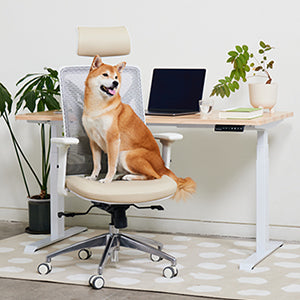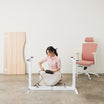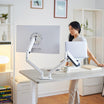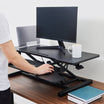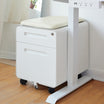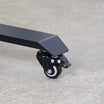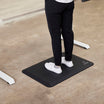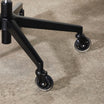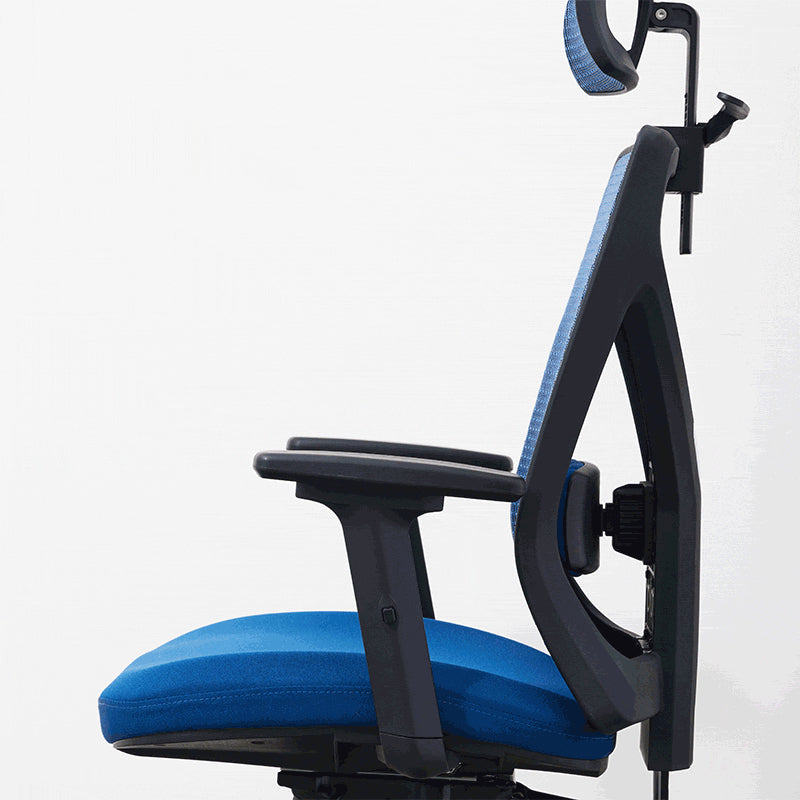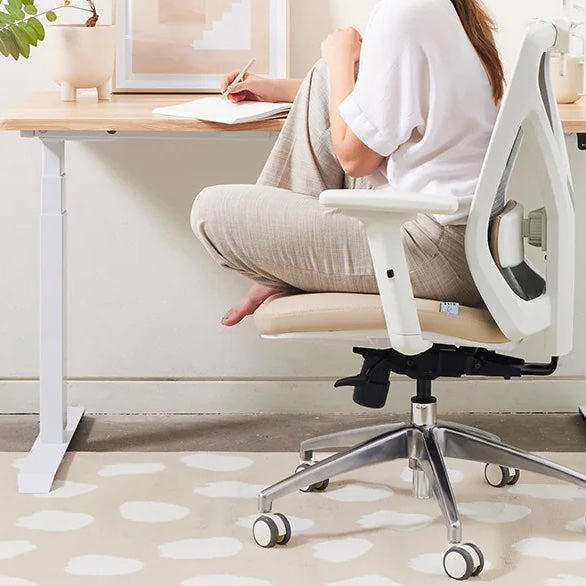So, you finally upgraded to an ergonomic office chair. What now?
Ergonomic chairs come with a plethora of adjustments to best fit each individual’s bodies. Customizing your ergonomic chair will aid in reaching maximal comfort and efficacy in lumbar and posture support.
Follow this step-to-step guide to perfectly adjust your ergonomic office chair to your needs!
1. Seat Height
To easily find your optimal seat height, sit with your back firmly against your chair. Adjust the chair such that your feet are flat on the ground, and knees are bent at 90-110 angle. Your knees should align or be slightly lower than your hips.
If having your feet reach the ground is not attainable, consider adding a stool or footrest.
Our Rise Ergonomic and Skye Chairs allow for up to 4” of height adjustments to find your perfect ergonomic seat height.

2. Seat Depth
Sitting with your back firmly against the backrest, ensure there is around 2-4 finger widths of space between the edge of the chair and the back of your knees.
This customization prevents lower body and back pain, and if done correctly, should ensure that there is no pressure on the back of your thighs or knees.
The Rise Skye Chair offers 2” of seat depth customization to maintain an ergonomic posture.

3. Backrest Height
Aside from chair height, backrest height can also be customized. Customize the backrest height to where the chair feels most comfortable with your body, according to your upper body and torso.
The Rise Skye Chair provides 7 stages of height, allowing for individuals of all heights to find their perfect fit.

4. Lumbar Support
The lumbar support belongs in the lower back and natural arch of your spine. You may find it most comfortable at belly-button height.
Following this, adjust the lumbar piece in or outwards, depending on the curvature of your spine, to whatever feels most comfortable.
Both Rise Ergonomic and Skye chair provides up to 2” of adjustable vertical lumbar height, paired with 2” of horizontal firmness adjustments to help reduce the stress on your lower back and cervical spine.
 |
 |
5. Tilt Support
Chiropractors recommend to never remain in the same sit or stand position for too long. Unlock the tilt function on your ergonomic chair to allow for rest and mobility throughout the day, relieving the spine and redistributing pressure.
All Rise chairs recline back 40 degrees, allowing for movement of the body and blood flow circulation.

6. Armrests
Adjust your armrests such that your elbows sit comfortably bent by your sides at 90-110 degrees. Ensure that you are not shrugging your shoulders or slouching when adjusting.
For further customizations, depending on your desk, you may also need to adjust your arrests forward/backwards, or laterally to support phone use. Adjust this as you go throughout the day, depending on your tasks.
Both Rise chairs allow for up to 4” of upwards armrest adjustments, while the Rise Skye Chair also offers right and left lateral movement as well as 2” of forward armrest adjustments.
 |
 |
7. Headrests
With your back against the chair and neck in a neutral position, adjust the headrest to sit at the base of the back of your head. You should not feel any discomfort or feel that your neck is being pushed forwards or downwards.
All Rise chairs allow for 2” of vertical headrest adjustments.

8. Additional Adjustments and Tips
Don't forget that aside from customizing your ergonomic chair, it is equally important to ensure that you keep your computer screen an arm’s length away from your body, and at near-constant eye level.
Hooray! You now have the perfectly customized ergonomic chair for your everyday office needs.

